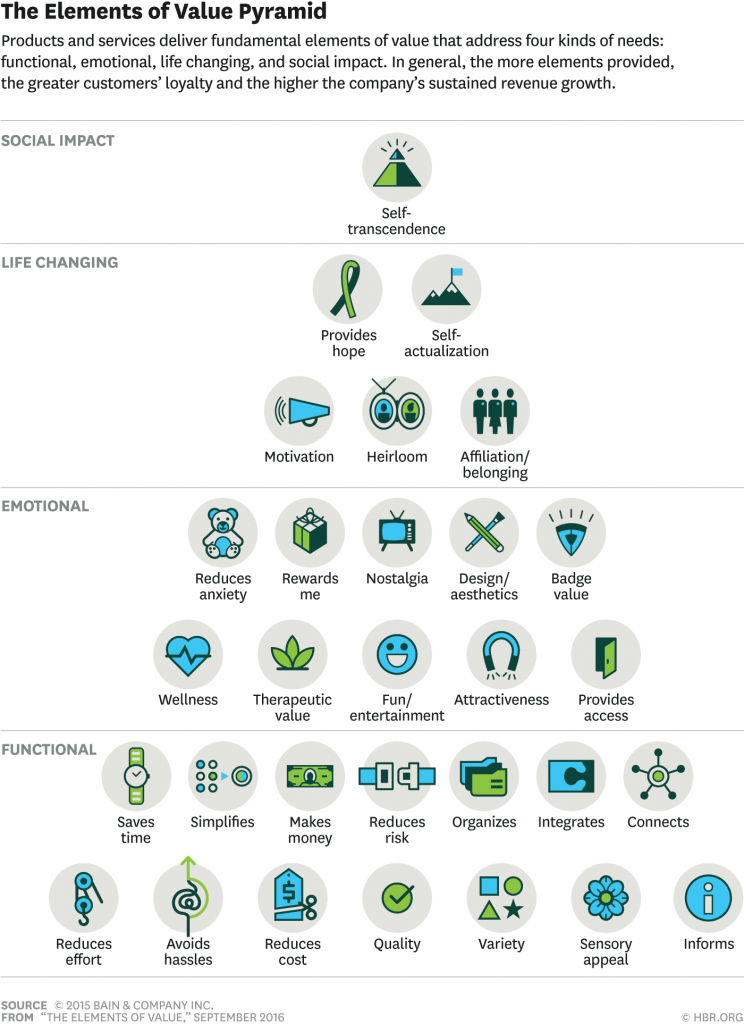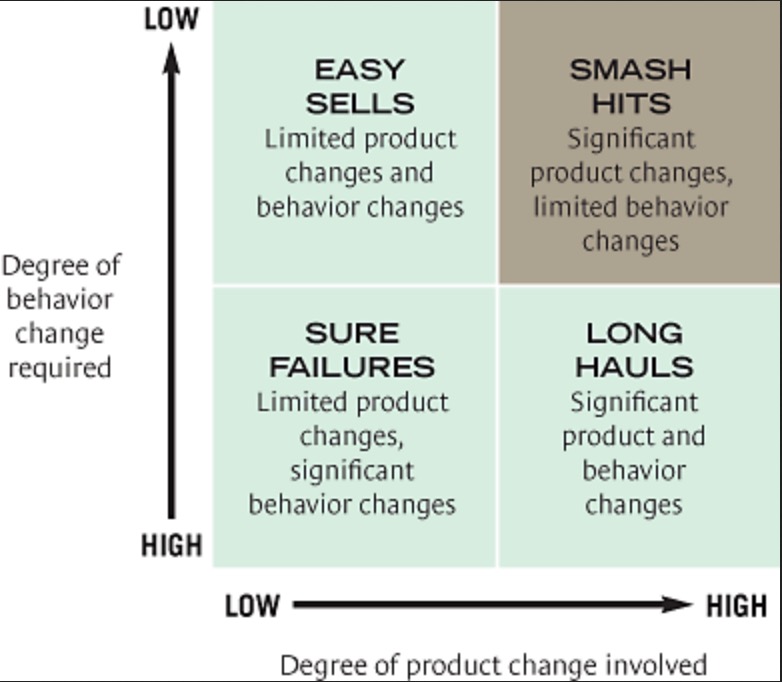How To Get People To Buy Your Product
It’s one thing to create a great product, but it’s another to figure out how to get people to buy your product.
The key to that is to create something valuable and communicate that value to potential buyers.
To do that, there are five concepts to master:
1. The root of product value is transformation.
Create products that help people get from where they are to where they want to go.
2. Product perception establishes value.
The story around your product determines its value as much as the product itself.
3. Product price establishes value.
The more expensive your product is, the more likely people will assume it’s valuable.
4. Product payment timing influences buying.
People feel more pain if they pay after consuming a product than before and if the transaction is more visible.
5. Product gains vs. losses influence buying.
The most successful products are ones that deliver maximum improvements with minimal behavior change.
Now here’s a deeper dive into how to use these concepts to sell products…
How To Write A Value Proposition
Value is transformation.
A person at Point A wants to get to Point B, and your product gets them there.
If your product takes people where they want to go — if it transforms them — then it’s valuable.
To express your value proposition, consider these questions:
1. Where is your target audience right now? (Point A)
2. Where do they want to go? (Point B)
3. How will your product help them get there? (The Bridge)
For example, let’s say you’re a guitar teacher.
Your target audience doesn’t know how to play guitar (Point A), but they want to become someone who plays guitar (Point B).
The guitar lessons you sell are the Bridge to get them there and your value proposition is that your lessons transform someone from a non-player to a player.
The same value proposition template can be applied to less obvious transformations as well.
Let’s say you created a course about work-life balance.
Your target audience is people who feel overworked, anxious, and stressed all the time (Point A), but they want to feel the opposite (Point B).
In this example, your value proposition is that the time management and relaxation tips you share in your course are the Bridge that leads readers from a chaotic life to a balanced one.
In the case of my For The Interested newsletter, my value proposition is that I show creators and entrepreneurs how to produce, promote, and profit from their creations.
What Is The Key To Creating Value?
A strong value proposition rooted in transformation only matters if your product lives up to it.
If you’re not sure how your product transforms your audience, here’s a simple way to think about it:
Transformation happens when you add or subtract something from someone’s life.
For example, your product might help buyers add new skills, knowledge, or habits.
Or, it might help them subtract bad habits, people, or problems from their life.
If your creation doesn’t add or subtract anything from someone’s life, it probably isn’t valuable.
Need a little inspiration? The Value Pyramid below features 30 things people value you may be able to deliver through your product.
As you define the value your products offer, it’s fine to offer multiple types of value — for example, one product may motivate people and another may help them reduce costs.
Just be clear on the intended value for each individual offering and message accordingly.
Perception Of Value
The perceived value of your product is as important as its actual value.
To demonstrate that, let’s talk about lobster.
It’s perceived as a high-end food these days, but for centuries lobster was primarily eaten by the poor, fed to prisoners, and even cheaper to buy than a can of baked beans.
That changed in the late 19th century — not because lobsters changed, but because the perception of them did.
Railway companies served lobster in dining cars and rebranded it as an exotic dish since it was now being served away from the shores where lobsters were found.
Because the perception of lobster changed, so too did the value consumers associated with it.
This led to overfishing, which reduced supply and increased prices — further driving up the perceived value of lobsters until today when it’s viewed largely as a high-end food.
Just like with lobsters, the value of your product will be influenced by people’s perceptions so make a concerted effort to influence those perceptions to your benefit whenever possible.
Premium Pricing Strategy
Let’s wash down that lobster story with a little wine to reveal how pricing strategy influences how likely people are to buy your product.
One of the biggest factors in how a wine tastes has nothing do with grapes or how it was made — it’s what price was slapped on the bottle.
Research shows people consistently say a wine tastes better if they think it’s more expensive.
And they’re not lying — it actually does taste better to them!
Brain scans reveal you experience more pleasure while drinking if you believe a wine cost $45 than if it cost $5.
This is because pricing impacts perception and perception impacts value.
Keep this in mind with your product pricing strategy.
You can price yourself out of a market if you go too high, but there are distinct advantages to pricing on the higher end of the spectrum in most cases.
People may not always get what they pay for, but they think they do.
How To Charge Customers For Services
The price you charge isn’t the only payment strategy that matters —how and when people pay for your product is also important.
An MIT and Carnegie Mellon University study revealed two key findings:
1. People feel more pain if they actually see the money leave their hands.
2. People feel more pain if they pay after they consume the product.
With this in mind, let’s talk about Uber and taxis.
In a taxi, riders stare at a meter that ticks up — a constant reminder of the pain of payment — and then must pay at the end of the ride.
By comparison, Uber has no visible meter and no visible transaction at the end of the ride.
One reason people choose Uber — despite it being more expensive than a taxi — is because payments are handled in a way that makes them feel less painful.
Another example comes from research that explored whether people would rather pay for a vacation in six monthly payments before they leave or after they return.
Sixty percent chose to pay in advance despite that doing so would potentially cost them more (because they could have earned interest on that money had they waited to pay until after the trip).
People prefer to pay up front because it’s painful to have a debt hang over them and to pay for something after they’ve already enjoyed it.
This tendency is worth considering when deciding how you charge people for your product.
The timing of payments and “pain” associated with your product will influence your customers’ perception of its value.
The less painful you make it, the more likely they are to buy.
Consumer Psychology
When someone decides whether or not to buy from you, they calculate whether what they’ll gain outweighs what they’ll lose in the transaction.
You may think the gains just need to be slightly bigger than the losses, but that’s not true — they need to be MUCH bigger.
Studies found if you offer people a bet with a 50% chance of winning $100 and a 50% chance of losing $100, they won’t take it.
To get people to agree to a bet, the potential gains must be at least twice as high as the losses because people feel losses more significantly than wins.
It’s not enough to make your product slightly better than the alternative — it must be significantly better for people to buy it.
And the degree of improvement your product offers is only half the battle.
If your product is an intended replacement for another product or service your audience already uses, that means you’re also asking them to undertake a behavior change.
No matter how simple your offering, they’ll have to learn a new way of doing something, use a different product, or in some way change their behavior.
And everyone is hesitant to change their behavior.
The bigger the behavior change required by your product, the bigger the improvements it must deliver for people to consider it valuable enough to buy.
Create products that require minimal behavior change and offer maximum improvements.
Here’s a Harvard Business Review chart to help you figure out how likely your product is to succeed or fail based on this concept.
If you’re not able to create a product that offers significantly better benefits with minimal behavior change, you may want to aim at a new market instead of competing in an existing one.
For example, Burton snowboards didn’t initially try to convert skiers into snowboarders — it went after non-skiers.
How To Get People To Buy Your Product: Additional Resources
A few more things I created to help you learn how to sell your products:
10 Ways To Boost Sales In One Minute
40 One-Sentence Product Sales Tips

